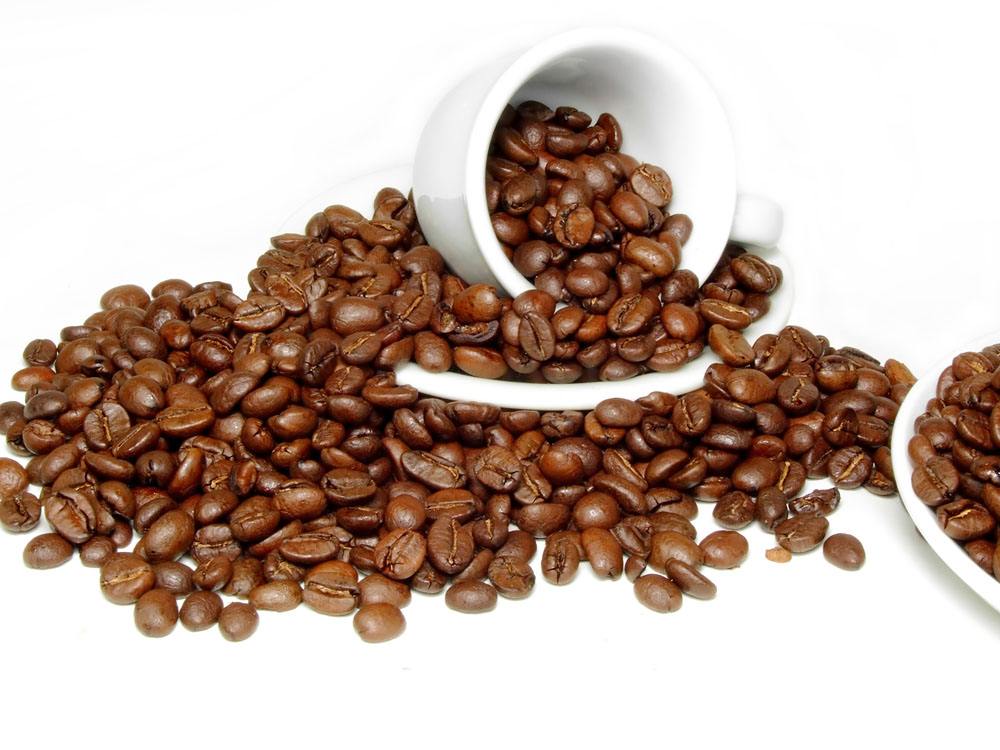Caffeine and chlorogenic acid, the embodiment of angels and demons
The two main characters in the complicated coffee world are caffeine and chlorogenic acid.
Both protagonists are the incarnation of angels and demons. However, with the deepening of the research, the angel face of chlorogenic acid becomes more and more attractive. How to desensitize chlorogenic acid is the baker's witchcraft. (desensitization means minimizing the negative effects of chlorogenic acid.)
Chlorogenic acid (CGA) is the largest and most important organic acid in coffee. Arabica accounts for about 6% to 7% of CGA, while Robusta accounts for 10%. Although this may not seem high, the relative concentration of chlorogenic acid is seven to eight times higher than caffeine.
"chlorogenic acid" does not refer to a single compound, it is a family of more than six different isomers. These compounds can be divided into two main families, monocaffeic acid and dicaffeic acid. Monocaffeic acid has a simpler structure and decomposes easily during baking, while the larger dicaffeic acid remains almost unchanged. There is evidence that dicaffeic acid is responsible for the bitterness of metals in coffee. Robusta, which usually shows a rougher taste, contains higher amounts of dicaffeic acid than Arabica. Since baking does not have much influence on dicaffeic acid, it is one of the bakers' witchcraft that bakers choose varieties with less dicaffeic acid.

Interestingly, in the plant world, plants produce these rough tastes of dicaffeic acid as an effective defense against wild insects. So Robusta is stronger and more disease-resistant than Arabica.
The concentration and type of CGA produced by plants depend on many factors. CGA varies greatly in plant genetics, species and varieties, and is also important in the daily environment in which it is cultivated. Plants exposed to more harsh conditions produce higher levels of CGA than plants exposed to mild conditions. The planting of shade trees and global warming will have a profound impact on CGA. Choosing varieties with good varieties, high elevations and shaded trees is the second witchcraft of bakers.
The formation and development of CGA in plants may be difficult to predict for bakers, but CGA can be predicted in other ways. The pyrolysis of CGA during baking depends on many factors, such as the type of roaster, air flow, time, temperature, etc.
We found that the CGA content decreased by 50% to 80% from medium baking to deep baking. Decomposition brings about significant changes in sensory perception which can be easily observed when comparing coffee with different roasting degrees. Therefore, controlling the bean temperature to reach a predetermined baking degree is the third of the bakers' witchcraft.
Decomposition of chlorogenic acid to quinic acid and caffeic acid
If you look closely, you will see that the reaction splits the CGA in half and produces the same amount of product in an one-to-one ratio (on the right). It means that for every gram of decomposed CGA, we produce corresponding amounts of caffeic acid and quinic acid. These compounds are phenols in nature, and they produce astringent taste and lingering aftertaste. For example, in espresso, we may want properties that these substances may be desirable, but for other brewing methods, excessive amounts of these substances may disrupt the delicate acidity balance. Controlling the conversion and degradation of chlorogenic acid according to different cooking schemes is the fourth witchcraft of bakers.
The key to roasting is to choose the right coffee variety, origin, roasting degree, and ultimately control the chemical composition of the coffee to create a beautiful cup of coffee. However, we may never know what happened to the cup (or roaster), which is another example of how the coffee industry is both science and art.
A baker should be both a good scientist and a good wizard to complete the perfect integration of science and art.
Important Notice :
前街咖啡 FrontStreet Coffee has moved to new addredd:
FrontStreet Coffee Address: 315,Donghua East Road,GuangZhou
Tel:020 38364473
- Prev

What should we pay attention to when baking coffee?
The profession of coffee roaster is not only expressing coffee, but also expressing yourself. Usually we organize roasters to do coffee cup tests in the circle of Changsha, and we can tell which one comes from which roaster by the characteristics of coffee. As a baker, he often seems to realize his ideas in coffee through baking skills. And usually experienced bakers
- Next

Coffee brewing from the perspective of water, about taste perception
Following Cafe (Wechat official account vdailycom) found that the trigeminal nervous system (the triennial sensory system) of the trigeminal nervous system is unfamiliar to ordinary people, but recently there has been a lot of research work on how it affects people's perception of flavor. These nerve endings are widely distributed in the nasal meatus and oral cavity.
Related
- Beginners will see the "Coffee pull flower" guide!
- What is the difference between ice blog purified milk and ordinary milk coffee?
- Why is the Philippines the largest producer of crops in Liberia?
- For coffee extraction, should the fine powder be retained?
- How does extracted espresso fill pressed powder? How much strength does it take to press the powder?
- How to make jasmine cold extract coffee? Is the jasmine + latte good?
- Will this little toy really make the coffee taste better? How does Lily Drip affect coffee extraction?
- Will the action of slapping the filter cup also affect coffee extraction?
- What's the difference between powder-to-water ratio and powder-to-liquid ratio?
- What is the Ethiopian local species? What does it have to do with Heirloom native species?

